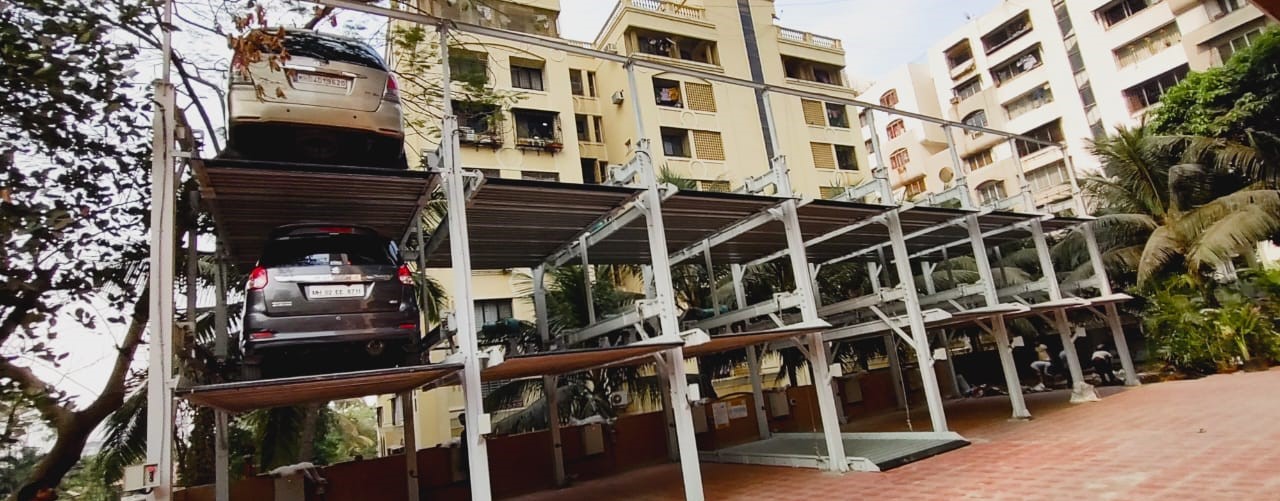As cities around the world struggle with limited space and increasing car ownership, the Car Stack Parking System offers a bold solution. It allows developers, planners, and property owners to park more vehicles vertically, reduce land usage, and support smarter, greener cities.
What is a Car Stack Parking System?
A Car Stack Parking System is a vertical parking arrangement that uses mechanical or hydraulic lifts to stack multiple vehicles in a single ground-level footprint. Depending on the configuration, systems can be semi-automated or fully automated ideal for residential buildings, commercial areas, malls, and hospitals.
Types of Car Stack Parking Systems
- Hydraulic Two-Post Stackers: Ideal for housing societies and small commercial plots.
- Puzzle Parking Systems: Multi-level, grid-style platforms for medium to large-scale parking.
- Rotary/Carousel Systems: Suitable for extremely narrow or tight plots.
- Fully Automated Tower Systems: Designed for high-density parking in cities with land constraints.
Why Cities Need It More Than Ever
1. Urban Land Scarcity
Real estate prices are at an all-time high in urban areas like Mumbai, Delhi, and Bengaluru. Vertical parking offers space-saving alternatives without requiring large plots.
2. Traffic Congestion
Drivers spend an average of 15–30 minutes just searching for parking. Stack systems reduce this by offering direct, allocated parking slots.
3. High Vehicle Growth
India adds millions of vehicles to its roads every year. Infrastructure must scale accordingly.
Key Advantages of the Car Stack Parking System
- Space Optimization: Use 70% less land per vehicle.
- Cost-Effective Construction: Less digging and less concrete than basement parking.
- Time-Saving Access: Automated or app-based vehicle retrieval speeds up exit.
- Security: Limited human access reduces vandalism, accidents, and theft.
- Eco-Friendly: Lower CO₂ emissions due to less idling and driving in parking areas.
Design and Installation Considerations
When planning for a Car Stack Parking System, a few factors must be evaluated:
- Ceiling height and plot size
- Vehicle dimensions and weight
- Power supply and backup options
- Maintenance access and emergency controls
- User interface (manual, RFID, app, etc.)
Early involvement of parking consultants during architectural planning can save costs and maximize parking density.
Popular Applications in India
- Apartment Complexes: Especially in metro cities where stilt and basement space is limited.
- Shopping Malls: To accommodate high footfall and maximize revenue-generating floor space.
- IT Parks and SEZs: Where thousands of employees commute daily.
- Hospitals and Hotels: Where visitor and staff parking demand exceeds ground-level availability.
- Public Parking Lots: In busy markets, railway stations, or tourist zones.
Government Incentives and Building Norms
Urban development authorities in many cities have now:
- Mandated stack parking for large commercial/residential developments.
- Provided FSI or TDR benefits for vertical parking.
- Integrated parking systems into smart city infrastructure plans.
This makes adoption more viable for real estate developers.
Integration with Smart Technology
Modern stack parking systems now come with:
- Mobile apps for booking and retrieval
- Automated billing and payment gateways
- License plate recognition
- Remote monitoring and error alerts
- EV charging support
This enhances user experience and keeps the system future-ready.
Maintenance and Durability
Though mechanical, these systems are built to last. Regular checks, preventive maintenance, and AMC (Annual Maintenance Contracts) ensure long-term durability and system uptime. Training security or facility staff to operate the systems reduces mishandling.
Future of Car Stack Parking Systems
As EV adoption rises, car stack parking will evolve with integrated charging stations. AI-driven parking allocation, voice-controlled access, and solar-powered systems are on the horizon. In the long run, these systems will contribute to decarbonized, intelligent cities.
The Car Stack Parking System is more than just a parking upgrade it’s a strategic investment in urban development. With its ability to save land, reduce stress, and integrate with smart technologies, it aligns perfectly with the goals of modern real estate and infrastructure projects.
In a world that’s only getting more crowded, going vertical is no longer a luxury it’s a necessity.
